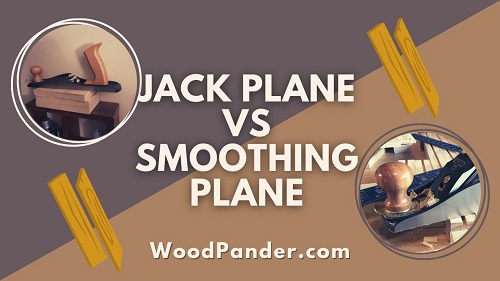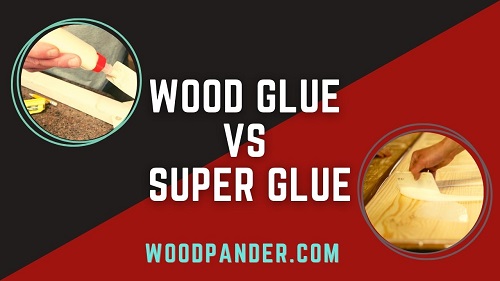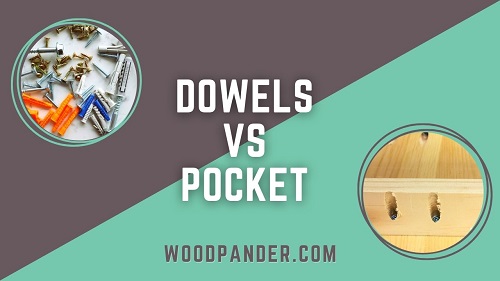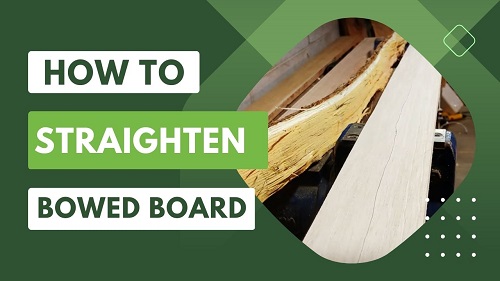Woodworking enthusiasts often face the dilemma of selecting the right plane for their projects. Two popular options that often come up are the Jack Plane and the Block Plane. While both are essential tools for shaping and smoothing wood, they have distinct features and applications.
In this article, we will explore the differences between Jack Planes and Block Planes, discussing their purpose, design, blade adjustments, size, weight, maneuverability, versatility, finishing capabilities, pricing, and more. By the end, you’ll have a clear understanding of which plane suits your woodworking needs.
Jack Plane vs Block Plane: A Comparison Table
| Jack Plane | Block Plane | |
|---|---|---|
| Purpose | Rough stock dimensioning, leveling surfaces | Precision work, end-grain tasks, fine detailing |
| Design | Longer and larger with a wider blade | Compact and lightweight |
| Blade Adjustments | Lateral adjustment lever, depth adjustment wheel | Small depth adjustment knob |
| Size and Weight | Larger and heavier | Smaller and lighter |
| Maneuverability | Slightly less maneuverable, but provides stability | Highly maneuverable and easy to manipulate |
| Control | Well-suited for heavy material removal | Ideal for precise and delicate cuts |
| Versatility | Versatile for rough shaping and leveling | Specialized for precision and finishing tasks |
| Finishing and Smoothing | Primarily for stock removal, prepares for finer tools | Excels in achieving smooth and refined surfaces |
| Pricing | Generally more expensive | Typically more affordable |
One of our articles –Jack Plane vs Smoothing Plane.
What is a Jack Plane?
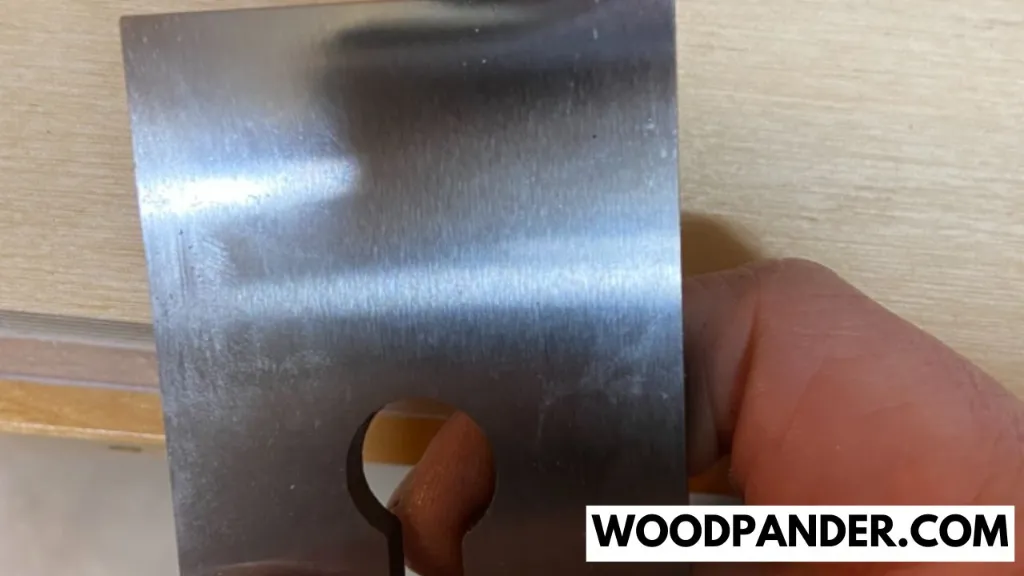
A Jack Plane is a versatile woodworking tool used for dimensioning and flattening rough stock. It is designed to quickly remove excess material, making it an excellent choice for leveling surfaces and reducing the thickness of stock.
The Jack Plane typically features a longer sole compared to other planes, allowing it to remove material efficiently across broader sections of wood. It has a wider blade that enables it to make rapid and substantial cuts. The design of the Jack Plane emphasizes speed and efficiency in rough shaping tasks, making it an indispensable tool in the woodworking workshop.
Woodworkers commonly use the Jack Plane to flatten wide boards, reduce the thickness of rough lumber, or prepare stock for further refinement with other planes. Its versatility and ability to remove material quickly make it an essential tool for initial stock preparation and rough dimensioning.
The Jack Plane typically has a handle at the rear and a front knob that provide stability and control during use. The blade adjustment mechanisms, such as a lateral adjustment lever and a depth adjustment wheel, allow for quick and accurate modifications to the blade’s position, ensuring optimal performance.
Overall, the Jack Plane is a powerful tool that excels in heavy material removal and leveling tasks. Its long sole and wide blade make it a reliable companion for woodworkers who need to shape and prepare rough stock efficiently. Whether you’re working on large-scale projects or simply need to level a surface, the Jack Plane is a valuable tool that helps bring woodworking projects closer to their desired form.
One of our articles –Cedar vs Cypress Wood.
What is a Block Plane?

A Block Plane is a versatile hand tool used in woodworking for precision work, fine detailing, and achieving a smooth finish on wood surfaces. It is smaller and more compact compared to other planes, making it highly maneuverable and ideal for delicate tasks.
The Block Plane typically features a low-angle blade, which is set at a shallow angle relative to the sole of the plane. This design allows the Block Plane to make clean and precise cuts, particularly on end-grain surfaces. The blade is often adjustable, allowing woodworkers to control the depth of the cut with precision.
One of the distinguishing features of the Block Plane is its size and lightweight nature. Its compact design makes it easy to handle and manipulate, even in tight spaces or when working on smaller pieces of wood. Woodworkers appreciate the Block Plane for its ability to remove thin shavings and refine surfaces with finesse.
The Block Plane is commonly used for various woodworking tasks, including chamfering edges, fitting joints, smoothing end-grain surfaces, and adding intricate detailing. Its maneuverability and precise control make it an invaluable tool when working on projects that require meticulous attention and a high level of accuracy.
The ergonomic design of the Block Plane typically includes a handle at the rear and a front knob, providing a comfortable grip and control during use. The small depth adjustment knob allows for easy modifications to the blade’s projection, ensuring consistent and controlled cuts.
Overall, the Block Plane is a versatile tool that excels in precision work and finishing tasks. Its compact size, maneuverability, and ability to create smooth and refined surfaces make it a valuable asset in the woodworking workshop. Whether you’re adding final touches to a project or working on intricate details, the Block Plane is a reliable companion that helps achieve exceptional woodworking results.
Differences Between Jack Plane and Block Plane

Purpose and Applications
The Jack Plane is primarily used for rough stock dimensioning, leveling surfaces, and reducing stock thickness. It excels in removing large amounts of material quickly and efficiently. In contrast, the Block Plane is suitable for fine woodworking tasks, including end-grain work, chamfering, and precision shaping. Its compact size and maneuverability make it ideal for delicate and intricate projects.
Design and Features
The Jack Plane is typically longer and larger, with a wider blade and a more substantial body. It is designed to remove material rapidly while providing stability during use. The Block Plane, on the other hand, is compact and lightweight, featuring a lower-angle blade for precise cuts. Its design allows for easy manipulation and control, even in tight spaces.
Blade Adjustments
Both the Jack Plane and the Block Plane offer blade adjustment mechanisms, but they differ in their precision and range. Jack Planes usually have a lateral adjustment lever and a depth adjustment wheel, enabling quick and accurate modifications to the blade’s position. Block Planes commonly feature a small depth adjustment knob, allowing fine-tuning of the blade for precise cuts and shavings.
Size and Weight
Due to their distinct purposes, Jack Planes are generally larger and heavier than Block Planes. The extra size and weight of the Jack Plane provide stability and momentum, allowing for efficient stock removal. In contrast, the compact size and lighter weight of Block Planes make them more maneuverable and suitable for intricate woodworking tasks that require precision.
Maneuverability and Control
When it comes to maneuverability and control, the Jack Plane and the Block Plane offer different advantages based on their design and size.
The larger size of the Jack Plane can sometimes make it slightly less maneuverable, especially in tight spaces or when working on small pieces of wood. However, its extended sole provides stability and control when removing large amounts of material. The weight and length of the Jack Plane allow woodworkers to exert more force and maintain a steady motion, making it an excellent choice for heavy-duty stock removal tasks.
On the other hand, the compact size and lightweight nature of the Block Plane enhance its maneuverability. It can easily be manipulated in various positions and angles, making it ideal for delicate and intricate woodworking tasks. The smaller sole of the Block Plane allows for precise control over the wood surface, enabling woodworkers to work with finesse and attention to detail.
Whether you prioritize stability and power or flexibility and precision will depend on the specific project at hand. For larger-scale tasks that involve significant material removal, such as leveling wide boards or flattening rough surfaces, the Jack Plane’s maneuverability and control shine. However, if you’re working on small pieces or intricate designs that require careful shaping and finishing, the Block Plane’s maneuverability and precise control will be a valuable asset.
Remember, the choice between the Jack Plane and the Block Plane isn’t an either-or decision. Many woodworkers find that having both tools in their arsenal allows them to tackle a wide range of woodworking projects efficiently and effectively. Consider the specific requirements of your project and the level of maneuverability and control you need to make an informed decision.
Versatility
Versatility is an essential factor to consider when choosing between the Jack Plane and the Block Plane. Each tool has its own set of applications and excels in specific woodworking tasks.
The Jack Plane’s primary strength lies in its versatility for rough stock dimensioning and leveling surfaces. Its long sole and robust construction make it highly efficient at removing large amounts of material quickly. Woodworkers commonly use the Jack Plane to flatten wide boards, reduce the thickness of rough lumber, or prepare stock for further refinement with other planes.
On the other hand, the Block Plane showcases its versatility in precision work and fine woodworking applications. Its compact size and maneuverability make it an excellent choice for end-grain work, chamfering edges, trimming small pieces, and fitting joints. The Block Plane allows for controlled and accurate shaping, especially when working on smaller or more intricate components of a project.
While the Jack Plane is often the go-to tool for initial rough shaping and leveling, the Block Plane shines in detail-oriented tasks and adding those final touches to a project. Having both tools available gives you the flexibility to switch between them depending on the specific requirements of each stage of your woodworking process.
Finishing and Smoothing
When it comes to finishing and smoothing wood surfaces, both the Jack Plane and the Block Plane can play valuable roles, but their approaches differ.
The Jack Plane’s primary purpose is not focused on achieving a fine finish. Its design and blade setup prioritize stock removal and leveling, making it efficient for reducing the thickness of rough lumber or quickly flattening wide boards. However, the Jack Plane can still contribute to the smoothing process by removing high spots and leveling the wood’s surface before moving on to finer planes or sanding.
The Block Plane, on the other hand, is specifically designed to excel in finishing and smoothing tasks. Its low-angle blade, combined with its compact size, allows for precise control and delicate cuts. Woodworkers often turn to the Block Plane for end-grain work, where it can create clean and smooth surfaces, or for adding subtle chamfers and shaping details that require meticulous attention.
For achieving a truly refined and smooth finish, it’s
essential to follow up the initial rough shaping with the Jack Plane by utilizing finer planes and sanding techniques. The Block Plane can then be employed to refine the surface further, smoothing out any remaining imperfections and achieving the desired level of smoothness.
By combining the strengths of both planes, woodworkers can achieve exceptional results in finishing and smoothing. The Jack Plane efficiently removes excess material, while the Block Plane provides the precision and finesse needed for final surface refinement. This combination allows for a gradual progression from rough to refined surfaces, resulting in beautifully finished woodworking projects.
Pricing
Price is often a factor to consider when selecting woodworking tools, including planes. The cost of Jack Planes and Block Planes can vary based on various factors, such as the brand, quality, and additional features.
Generally, Jack Planes tend to be more expensive compared to Block Planes. This price difference can be attributed to their larger size, heavier construction, and versatility for heavy-duty tasks. Jack Planes are designed to handle substantial material removal, and their robust build ensures durability and long-term use.
On the other hand, Block Planes are typically more affordable due to their smaller size and specialized nature. While they might not have the same capacity for heavy stock removal as Jack Planes, they excel in precision work and finishing tasks. Block Planes often come in different sizes and designs, offering woodworkers options to fit their specific needs and budget.
When considering the price, it’s important to assess your woodworking requirements and the frequency of use. If you anticipate working on projects that require significant material removal and leveling, investing in a quality Jack Plane would be a wise choice. However, if you primarily focus on fine detail work and finishing, a well-made Block Plane can provide excellent value for its price.
Ultimately, the price should be viewed in conjunction with the quality and durability of the tool. It’s advisable to choose planes from reputable brands known for their craftsmanship and reliability. While the initial investment might be higher, a well-maintained and durable plane can serve you for years, making it a worthwhile long-term investment in your woodworking journey.
Related Questions
Can I use a Block Plane for rough stock removal?
While Block Planes can remove small amounts of material, they are not designed for heavy stock removal tasks. Their primary strength lies in precision work and finishing.
Can a Jack Plane be used for detailed shaping?
While a Jack Plane is not the ideal tool for intricate detailing, it can be used to remove excess material and level surfaces before moving on to finer planes or sanding.
Are there different sizes of Block Planes available?
Yes, Block Planes come in various sizes to cater to different woodworking needs. Smaller block planes are ideal for intricate work and fitting joints, while larger block planes offer more stability and control for broader surfaces.
How often should I sharpen the blades of these planes?
The frequency of sharpening depends on the type of wood you’re working with and the intensity of use. As a general guideline, it’s recommended to sharpen the blades of both the Jack Plane and the Block Plane when you notice a decline in their performance or when they fail to produce clean and smooth cuts.
Can I use a Jack Plane and a Block Plane interchangeably?
While there might be some overlap in their applications, the Jack Plane and the Block Plane serve different purposes. It’s best to use them according to their intended functions to achieve optimal results. The Jack Plane is most suitable for rough stock removal and leveling, while the Block Plane excels in precision work and finishing.
Remember, the choice between the Jack Plane and the Block Plane ultimately depends on the specific woodworking task at hand. By considering their differences in maneuverability, versatility, finishing capabilities, pricing, and more, you can confidently select the right plane to enhance your woodworking skills and bring your projects to life.

